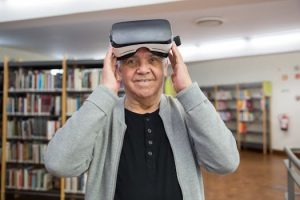The End of Homework? New Perspectives on After-School Learning
The end of homework has been a hotly debated topic for many years. With the rise of technology and virtual learning, there has been an increasing call to abolish traditional homework assignments. However, recent research has shown that there may be new, more effective strategies for after-school learning. In this article, we will explore the latest perspectives on after-school learning and the potential for the end of homework as we know it. Let’s dive in!
The Impact of Homework on Student Learning
For decades, homework has been a staple of the American education system. It is often seen as a way to reinforce classroom learning and develop good study habits. Proponents argue that homework helps students to become more responsible, disciplined, and academically successful. However, there is growing evidence that homework may not be as effective as we once thought.
A Focus on Quantity over Quality
One of the major criticisms of traditional homework is its emphasis on quantity over quality. Many students are bogged down with multiple assignments every night, leaving them little time for extracurricular activities or self-care. This can lead to burnout and feelings of stress and anxiety. It also leaves little room for exploration and creativity, two important components of learning.
Unequal Access and Resources
Another issue with homework is its reliance on resources outside of the classroom. Students from lower-income families may not have access to necessary materials, such as textbooks or internet access, which can put them at a disadvantage. This can also create a widening achievement gap between students from different socioeconomic backgrounds.
The Role of Technology in After-School Learning
In recent years, technology has played an increasing role in after-school learning. With the rise of online learning platforms and educational apps, students have access to a wealth of resources and can learn at their own pace. This has led to a reevaluation of traditional homework assignments and the potential for more effective learning strategies.
New Perspectives on After-School Learning
Flipped Learning
One promising alternative to traditional homework is the concept of flipped learning. This approach involves students watching video lectures or completing readings at home, and then using class time for hands-on activities and group discussions. Proponents argue that this allows for more active and engaged learning, as well as a deeper understanding of the material.
Project-Based Learning
Project-based learning is another strategy gaining popularity in schools. Instead of completing multiple assignments, students are given one larger project that requires them to use critical thinking and problem-solving skills. This type of learning encourages creativity and exploration, and also allows students to dive deeper into a subject that interests them.
Self-Paced Learning
With the help of technology, students can now learn at their own pace. This is especially beneficial for students who may need extra time to fully grasp a concept. By allowing students to work at their own speed, they can achieve a deeper understanding of the material and build confidence in their abilities.
The Potential for the End of Homework
With these new perspectives on after-school learning, the end of traditional homework may be on the horizon. Flipped learning, project-based learning, and self-paced learning all have the potential to eliminate the need for traditional homework assignments. This not only benefits students but also teachers, who no longer have to spend hours grading assignments.
However, it is important to note that these new strategies are not a complete replacement for homework. Some assignments, such as reading and studying, are still important for reinforcing learning and building good study habits. But with the emergence of more effective after-school learning methods, it may be time to rethink how we approach homework.
In Conclusion
The end of homework as we know it may be closer than we think. With the rise of technology and new perspectives on after-school learning, there are now more effective ways for students to learn outside of the classroom. It’s time to move away from traditional homework assignments and embrace new strategies that foster creativity and critical thinking. After all, the goal of education should be to create lifelong learners, not homework machines.









